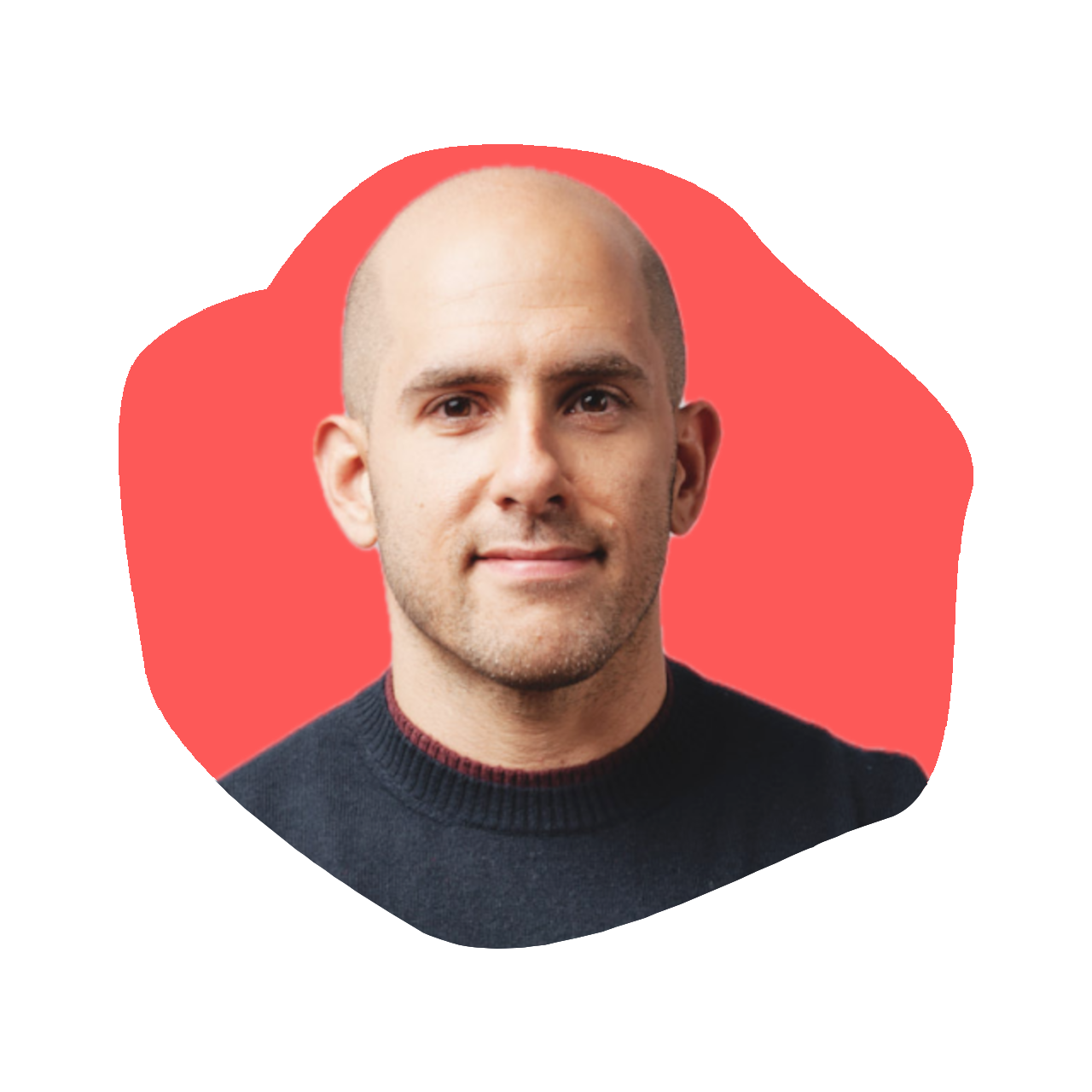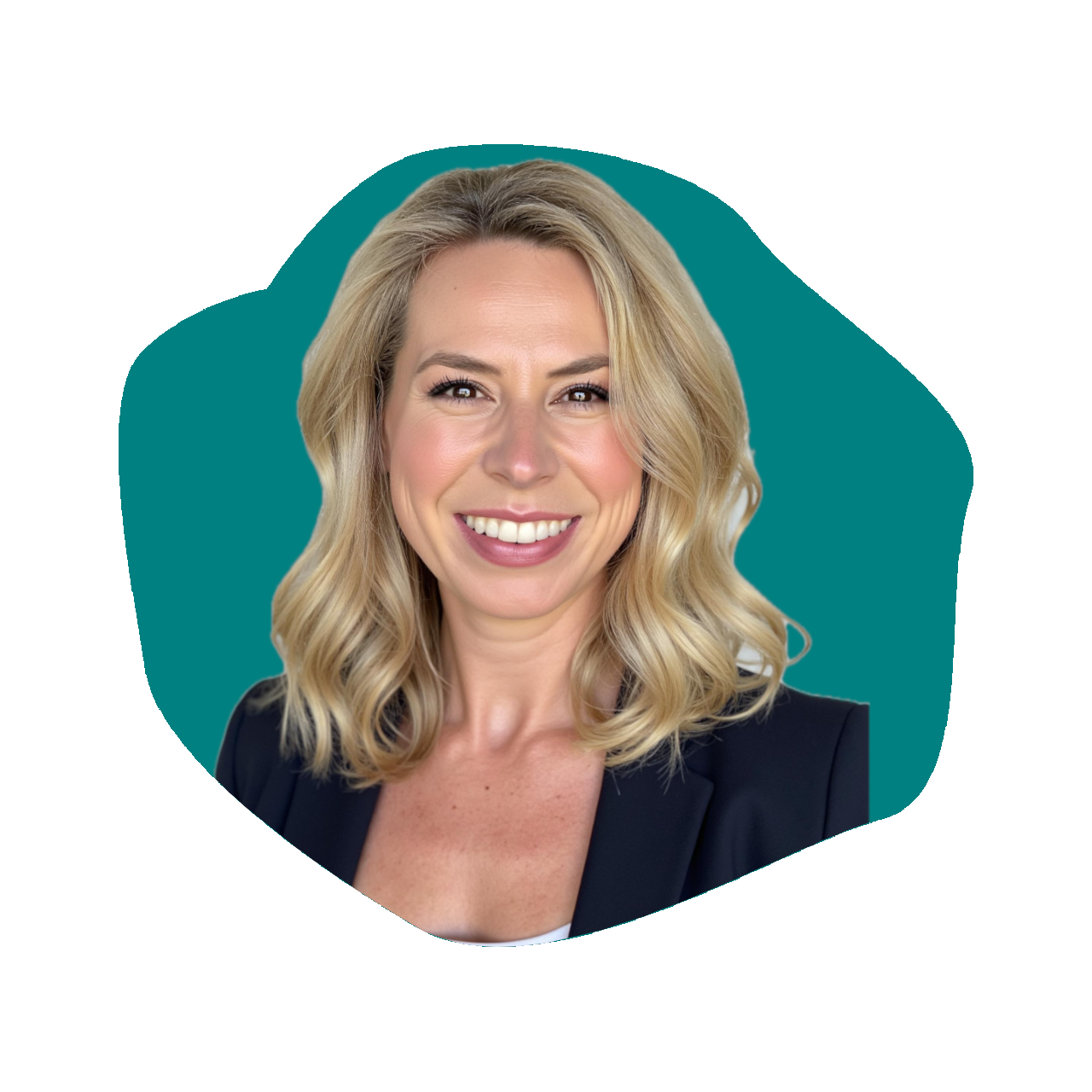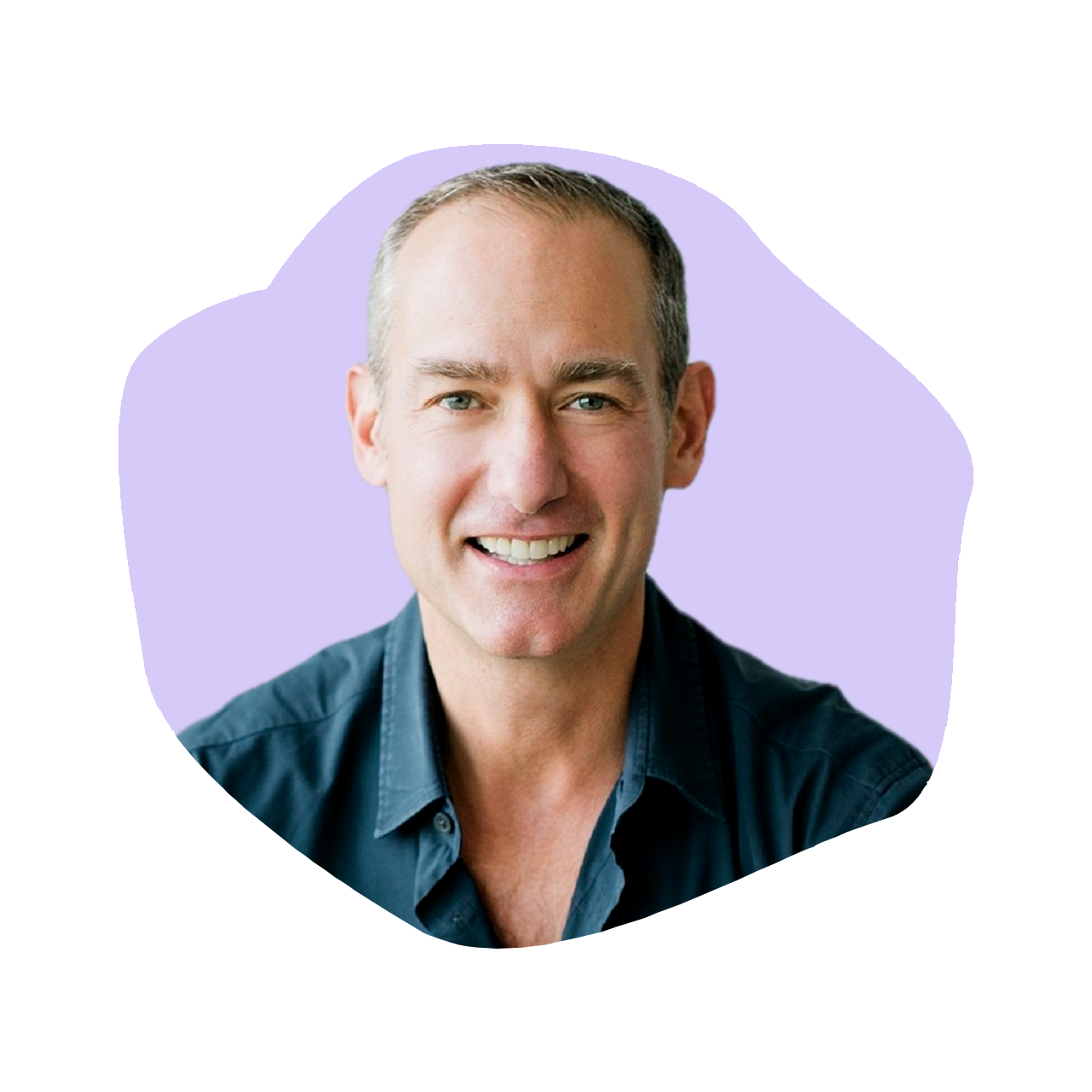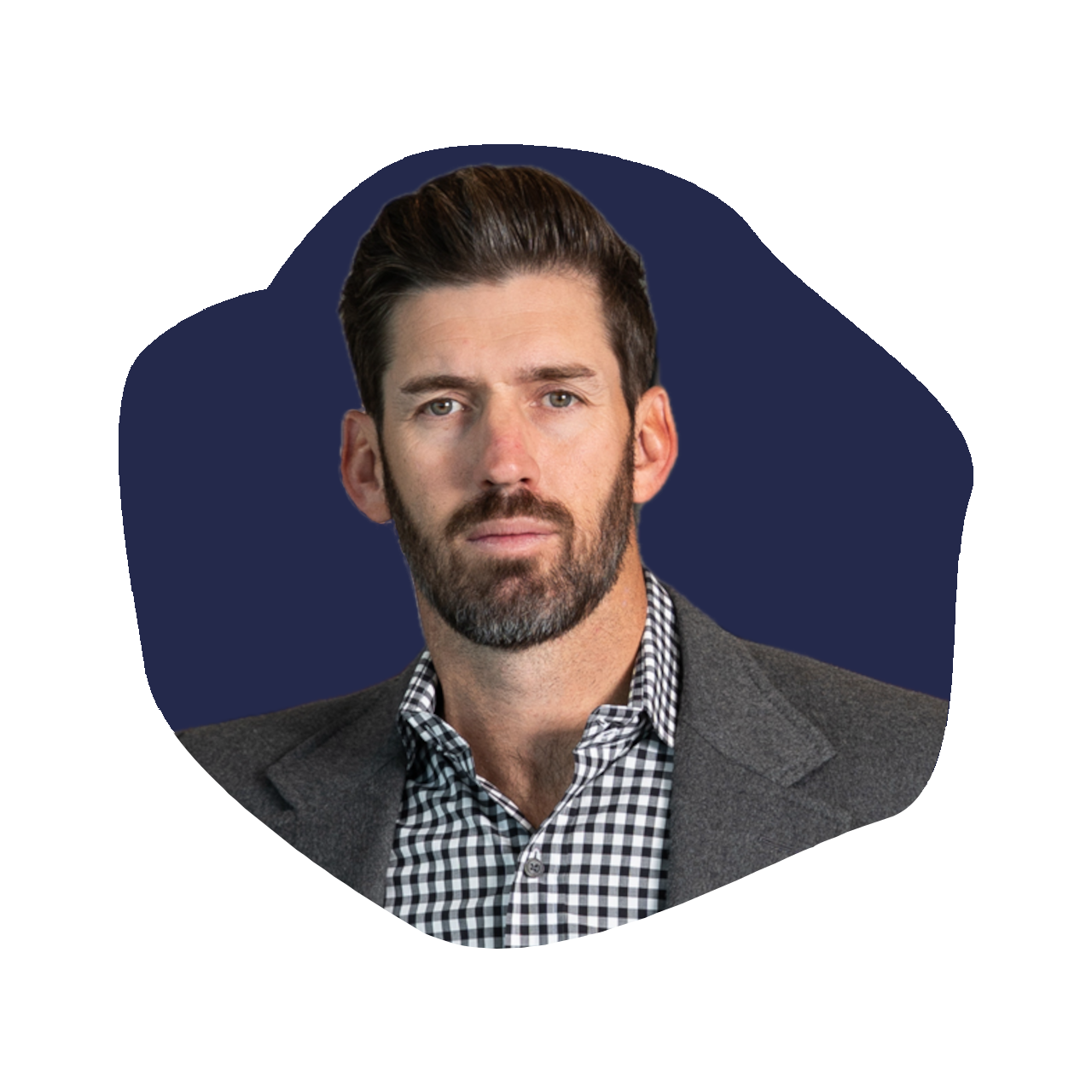Nicolas Jammet: Co-Founder & Chief Concept Officer of Sweetgreen
Episode 754

On this episode of The Kara Goldin Show, we’re joined by Nicolas Jammet, Co-Founder and Chief Concept Officer of Sweetgreen, the mission-driven restaurant brand redefining fast food with fresh, crave-worthy meals. Nicolas and his co-founders launched Sweetgreen in 2007, opening their very first location in Georgetown just three months after graduating college. What started as a single salad shop has grown into a nationally recognized brand with hundreds of locations and a loyal following, all built on a vision of making healthy food accessible and transparent.
In our conversation, Nicolas shares how Sweetgreen nearly ran out of money in the early months, the turning point that showed him the concept could scale, and how he’s balanced innovation with operational rigor. We dive into the role of technology in shaping Sweetgreen’s growth, the challenge of scaling culture across hundreds of restaurants, and how the brand continues to stay ahead in a crowded marketplace. Nicolas also reflects on the toughest leadership lessons he’s faced and what he sees as the future of food, wellness, and Sweetgreen’s place in it.
Whether you’re an entrepreneur, a foodie, or someone passionate about mission-driven business, this episode is full of insights and inspiration. Tune in to hear Nicolas’s journey and what it takes to build a category-defining brand. Now on The Kara Goldin Show.
Resources from
this episode:
Enjoying this episode of #TheKaraGoldinShow? Let Kara know by clicking on the links below and sending her a quick shout-out on social!
Follow Kara on LinkedIn – Instagram – X – Facebook – TikTok – YouTube – Threads
Have a question for Kara about one of our episodes? Reach out to Kara directly at [email protected]
To learn more about Nicolas Jammet and Sweetgreen:
https://www.instagram.com/nicolasjammet
https://www.linkedin.com/in/nicolas-jammet-5b9b878/
https://www.sweetgreen.com/
Transcript
Kara Goldin 0:00
I am unwilling to give up, that I will start over from scratch as many times as it takes to get where I want to be. I want to be you. Just want to make sure you will get knocked down. But just make sure you don’t get knocked out, knocked out. So your only choice should be go focus on what you can control. Control, control. Hi everyone, and welcome to the Kara Goldin show. Join me each week for inspiring conversations with some of the world’s greatest leaders. We’ll talk with founders, entrepreneurs, CEOs and really, some of the most interesting people of our time. Can’t wait to get started. Let’s go. Let’s go. Hi everyone and welcome back to the Kara Goldin Show. Today, I’m thrilled to be joined by a co founder of one of my favorite brands, something that is absolutely delicious, in case you are wondering what that is, it is called Sweetgreen. And I am joined by Nicolas Jammet, who is the co founder and chief concept Officer of this incredible brand called Sweetgreen, the mission driven restaurant brand that has completely redefined what fast food can be. So back in 2007 Nicholas and his co founders opened their first Sweetgreen in Georgetown, just three months after college, with little experience but a big vision, and they set out to make healthy food not only accessible but crave worthy. And in doing so, they pioneered an entirely new category today. Sweetgreen is a public company has grown into nationally record, a nationally recognized brand with hundreds of locations, beloved consumers as I am, and has been recognized by many, many incredible awards and publication and more, as one of the most creative and innovative thinking companies in the industry. So I can’t wait to dive into the early years and hear directly from Nicholas how this all came about, and talk just about what it’s like to build a powerhouse company, as he has. So Nicholas, welcome to the show. Super excited to have you. Thanks for having me, absolutely. So let’s start at the beginning. So well, actually, even before we get into sort of the story, I’d love for you to define Sweetgreen. I made an attempt at it because I’m such a big fan, but I’d love to hear how you define it.
Nicolas Jammet 2:35
Yeah, you did a great job. You know, I would say, when we started Sweetgreen, the idea was to really reimagine and redefine what a fast food restaurant could look like. And as we set out to build that and wrote the business plan that ultimately opened a few you know, the vision, the idea got even bigger. It was to kind of build the next great American fast food brand that rethought so much of the food journey, from what we’re sourcing, from who we’re sourcing, how it’s being grown, to how we’re prepping it, to the ingredients that go into your food, to the transparency around all of that, and the storytelling, and then ultimately creating a brand and a story around those things that create a lot of desire for the product. So, you know, it was kind of just really imagining a whole new fast food model.
Kara Goldin 3:18
You guys have just done such a great job. I remember your first location in DC. We were doing some some work out there. And I was like, Wait, what is this? And as I mentioned before, Ted leonsis had been an investor in a company that I was at back in the early days, and the friend that I was with knew Ted and said, Oh, that’s one of these companies that Ted just invested in, and anything that Ted touches, I am most interested in, and I know he was an early investor in Sweetgreen, but you you started just a few months after graduating from college. What were you thinking?
Nicolas Jammet 4:00
You know, my two co founders and I, Jonathan and Nathaniel, all had parents that were entrepreneurs, that were all immigrants, so we grew up in with that, you know, experience and that a background of just seeing our parents work really hard building something themselves. And when we were seniors at Georgetown, you know, we were, we had this common conversation, this daily conversation around, what are we going to eat today? Nothing really, you know, nothing really checks the boxes. Nothing makes us feel good. And we knew that the conversation on food was starting to shift, and so we wanted to create that option. So honestly, in the beginning, we were just building it for ourselves. We were the customers, and we knew this should exist, especially in Georgetown and probably in DC. We quickly realized this was an opportunity beyond DC, and that we wanted to kind of tackle the whole industry. And so early on, you know, as seniors, we had a lot of energy and wanted to build this. We wrote a business plan, raised $350,000 our senior year from anyone that would talk to us, Professor. Officers, old bosses, you know, friends, raising five grand at a time, and we finally opened it, you know, two months after graduation.
Kara Goldin 5:10
That’s wild. So how many did you start off with just one location,
Nicolas Jammet 5:14
just one, and we had one for the first, you know, almost two years that, and we learned a lot about the model. And we and then we opened two more in 22,009 and then we started adding more and more each year. Today, we are at almost 270 restaurants in 27
Kara Goldin 5:30
states in those early days. You know, you’re you’re looking at the business, trying to really figure out what it is that you have there. You’re seeing that people are enjoying it. But how did you have the courage to actually go out, raise more capital, decide to go outside of your familiar territory of Georgetown and and really blow it up?
Nicolas Jammet 5:56
You know, I would say the courage came from just having the conviction and the belief in what we were trying to build. And we, you know, we knew ourselves as customers and our friends, and we believe the next generation of consumers wanted an option like this, and this was going to be how people thought about food. And you have to remember, in 2007 you know, the conversation on food was very different. You know, Michael Pollan’s books were just kind of coming out and getting a lot of popularity. Of popularity, super size meat documentary that created a lot of conversation around the connection between food and health. You know, in 2008 the Obamas came into the White House, and Michelle Obama started talking a ton about health. And so the conversation was shifting. So we had the right belief at the right time. And ultimately, we got really excited about building, building a brand and experience around that kind of food. So from the beginning, you know, our message was never, you know, let’s be healthy and eat your veggies. To our customers, it was, Look at this cool place that’s, you know, that is telling cool stories and has a great design, and the food is delicious and it happens to be healthy, but we wanted to really create a brand that could create desire for this type of product.
Kara Goldin 7:07
Was there any item in there that that just didn’t work, that you were surprised about, or was there something that really did work that you were like, Oh, wow. Like, I can’t believe it’s, you know, lost leader for for a lack of a better term,
Nicolas Jammet 7:27
yeah, you know, early on, and I would say, over the course of our 18 year history, we have tried a lot of things on our menu, always rooted in the food ethos and the way we source and the way we prep, which really sets us apart from others in the industry. But you know, we’ve tried a lot of things in our menu that have worked or haven’t worked, or things that we’ve just evolved away from over time as we wanted to evolve to new things, we were very early in our space to have online ordering and digital ordering with an app, and so just creating that sense of convenience and removing friction for the guests. To us that was so important. And I remember, actually, Steve Case, you know, early on, when we were launching the app, he said, You know, before you know it, this will be over 50% of your business. And we thought that was crazy, and it became, you know, over 50% of our business. So Steve was right. So yeah, you know, we’ve tried a lot of things, and a lot of things work, and some things work, and some things don’t, but we try to really learn from the ones that don’t.
Kara Goldin 8:25
What was the hardest market for you to go into and penetrate?
Nicolas Jammet 8:30
You know, all a lot of the markets we entered had different types of challenges when we finally were ready for New York in 2013 so six years in, we had 20 restaurants in the broader DC, Virginia, Maryland and Philly area. Going to New York was a challenge because we knew that it was, you know, obviously the big city, and there’s lots of competition, and we wanted to really present ourselves and introduce the brand the right way to show all the differentiation. And so we worked really hard at that, and we’ve since now, you know, expanded quite quite a bit in New York City, and it’s a great market for us. Outside of that, you know, just we’re always kind of students of each market, in each city, in each community. So opening Sweetgreen in Texas, we were really nervous about for many years, but we really did our research for everything, from what we’re sourcing, what’s on the menu, how we build the restaurants, how we talk to customers there, and so lots of great lessons there. But I would say New York is the was, like the big mountain that we climbed when we opened there.
Kara Goldin 9:32
That was definitely when we were building hint. I would say that that’s probably the one that we underestimated. I think to you just need a lot of people you know, more than anything else. And and it as it relates to the beverage business, but it’s how, how important is location? I would imagine, you know, finding the right location is so so key. You probably have so many. People reaching out to you, saying you should open one by us, but you have, you know, decisions to make based on real estate. And we’ve had many guests on who have talked about how critical real estate is, and sometimes it’s tricky because it might not work in a certain location. And you know, if you’re too early, maybe that’s, you know, part of it, right? And we’ve had other people talk about being around other brands that are sort of like minded, I guess, is, is also key. I’d love to hear your perspective,
Nicolas Jammet 10:32
yeah, you know, I would say real estate site selection might be one of the most important things we do at Sweetgreen. You know, nothing works better than a plus real estate. And we’ve learned that. We’ve learned that the easy way and hard way many times over the years. And I think what it takes is really making sure that when you are picking real estate in a certain city, that you develop a deep sense of the customer in that city and just how that city moves and behaves and what the neighborhoods mean. And so that local knowledge, that local relevance, is really important. A lot of times, that means us just really understanding a city. You know, I’m born and raised in New York, so I understood New York very deeply, and I knew that, okay, here we’d have in this neighborhood, we should be on this block in this neighborhood, we can be off a block or two, because there’s all this new development happening over here. And then we really lean on our real estate brokers and partners in some of these other cities to really become experts in these cities. And then we have a real estate team, obviously, that knows these cities in and out so but, you know, picking a site, it can be, you know, you can be on the best block, but on the wrong side of the street. You can be, you can be on the best street, but on the wrong side. And, you know, even thinking about what side of the street gets the sunlight at certain times, who your co tenants are, who there’s all these factors that we try to, you know, really understand that goes into picking great real estate. So there’s a lot of art and science.
Kara Goldin 11:57
Definitely. I I read that in the in the first few months of of launching Sweetgreen, you came really close to shutting down. Can you talk about that story? Yes.
Nicolas Jammet 12:11
So our first restaurant was tiny, was 560 square feet, and it was right near Georgetown University. So when the winter hit and school and and students went home, our business just kind of came to a screeching halt, and we were still fairly young. We had opened in August, but that first winter was pretty dire. And there were, you know, some moments where, you know, we’d look at ourselves and be like, is this gonna work? And then we really started to try to say, okay, like, what? Why isn’t this working right now? What do we need to do? And we really analyzed everything from, again, our real estate, to how we built the location, the size of it, to the menu to, you know, all the things, to make sure that if we were to build a second one, how can we take these lessons, apply them, and see if the model works? And so the next two that opened, one didn’t work as well. And one worked incredibly well. And so we started to really understand our model. And you know that so much in the early life cycle of building a retail or restaurant business, especially if it’s your first time and you’re doing something kind of new, so much of it is learning the model. You know what works, what is what attracts the what kind of experiences the customer, respond well to what products are selling? What’s the labor model? What’s the you know, it’s all these different factors that go into like, Okay, this is the model.
Kara Goldin 13:29
Yeah, definitely, definitely. So from, it seems like from day one, and maybe you didn’t articulate this in with that first that with that first restaurant, but community has just been such a part of your brand. And today, community is something that I think people talk about, maybe talk about even more as we need more of it, particularly for communities that maybe aren’t necessarily going into an office. And, you know, there’s lots of discussions around that, but how did you build that into the DNA of the brand? I mean, did you, did you realize it? Or, how did you guys start thinking about community? And how did you activate that even more?
Nicolas Jammet 14:19
Yeah, it’s, it’s a great question, and I’ll say in the beginning, it just felt very natural to us. It’s how we wanted to build the brand and create awareness and welcome people into the Sweetgreen world. And then as we started to open, you know, more and more restaurants and open in more and more neighborhoods, we realized, you know, this idea of building community was what’s driving our business, and how do we really codify that and understand it so that we can drive it even more? And, you know, for so much of our life at Sweetgreen, honestly, a lot of our marketing and brand efforts and spend so much of it has been heavily weighted, especially in the early days, to community building and experiential, you know, bringing our customers and our community together to celebrate. Food, everything from, you know, hosting dinners on our on the farms that we sourced from with our customers, to throwing, you know, at the time, one of the Northeast biggest music and food festivals, there was this idea that we wanted to bring people together around food and just make people feel like they were part of the Sweetgreen community and Sweetgreen world. I think, to your point, it worked really well for us, but today, I think it’s more important than ever in this post covid world, just the idea of coming together and being with, you know, new people or like minded people in a community is really
Kara Goldin 15:31
important. Yeah, definitely. So how did you balance innovation with the need for standardization as you scaled? I mean, as you’re going from one restaurant, you talked a bit about, you know, the quality of the food, but there’s more than even that behind the scenes that is so, so critical to standardize. So how did you balance that?
Nicolas Jammet 15:55
Yeah, you know, it’s, it’s a constant balance that even today, we’re still very focused on, you know, at the end of the day, there’s nothing more important than really great execution in our restaurants, and making sure that the standards we have, that we’re following them, that we’re cooking things the right way, sourcing things the right way. So, you know, the execution is really critical. At the same time, we spend a lot of time trying to understand and think about where the world is going, where our customers going, where the conversation on food is going, and how we should evolve and innovate our product and our experience in that context. And so, you know, we have a brilliant marketing and brand team that spends a lot of time listening and talking to our customers and getting really great consumer insights. And then, just based on even our understanding or beliefs in the world, it’s kind of this mixture of art and science, we start to think about, okay, what can we do to better serve our customers, or what do we think would really excite new customers to come into the Sweetgreen world? And so, you know, then we have a now more rigorous than ever testing process around how we ideate something, develop it, test it bigger, you know, a bigger test, and then ultimately launch it for our
Kara Goldin 17:01
customers. So you talked a bit about the technology, the online ordering, and how that was definitely a key to growth for the company. I would imagine that other technology has been super core to Sweetgreens in your I always call it the timeline as as you map it out. But what role has tech played in really shaping your growth? I mean, you were just starting a healthy restaurant. That was the that was the concept and the idea, and all of a sudden, you know, you’ve got a lot of other things that are really critical, the obvious ones around digital ordering, or obvious maybe to some of us, but also personalization and and so much around technology that I think in any successful company today, they have to or I should say, it has impact. But I’d love to hear what you think.
Nicolas Jammet 17:58
Yeah, I would say that, you know, the the technology as part of our experience has been a core, part of our growth the last 17 years. Very early on, as we really we just opened a restaurant with very little technology, just the POS. And then as we really started to understand the consumer, where they were going, what they wanted in an experience, how the rest of their behaviors and transactions were evolving in their life. We really believed that there was an opportunity to create, you know, a whole different level of convenience using technology in our experience. So just this idea of, like, ordering your your bowl ahead and having it be ready for you when you want to pick up. And, you know, I think the consumer shifted a lot, because when we first opened, customers would say, Oh, wow, this place opened up three blocks away, and I just have to walk there and only wait 10 minutes in line and then walk back to my office and I have this healthy meal. How convenient. Fast forward five or six years. The consumer’s like, I have to walk three blocks away, I have to wait in this line. It’s like, I don’t have time. And so I think their expectations shifted. And so the idea of having a Sweetgreen app, and especially if you’re a frequent user, and being able to just go on and hit you know, order my favorite for lunch tomorrow noon, and just walk in and pick it up and walk back or eventually have it delivered. Obviously, that removal of friction made it even easier for our super users and our and our most frequent customers to just interact with Sweetgreen and use it almost like a utility. And so for us, we realized and believed that’s where the consumer was going to go. So as it relates to the experience and leveraging technology, that was a huge part of our evolution. And then, you know, we obviously spent a lot of time innovating on our menu in terms of what we’re serving, flavors, telling stories around our food ethos with different chefs and partners, and so we spent a lot of time trying to balance innovation both on product and on experience.
Kara Goldin 19:50
Is your menu consistent across the US? Do you have certain things that are that maybe work on the East Coast or in one location, but just there’s. No way we could launch it there.
Nicolas Jammet 20:03
Our menu is consistent. Our a lot of times where we source, things will change regionally, obviously, based on the seasons and based on, you know, our seasonal menu that changes five times a year. You know, something that’s interesting about Sweetgreen that is, unlike other folks in the industry, is we have this seasonal menu that changes up to five times a year, and that means we’re working with growers and farmers and food partners to source things at peak freshness and for a limited time and then tell that story. So when peach season hits, we are buying peaches from some of the greatest growers in the country, in California, and you might know them, we’re buying from frogs hollow farms for all of California, which is probably the most premier stone fruit grower in the country, and so we’re really proud of that. We think it tastes the best, and it’s why we do it. And so ultimately, you know, building a system around that. And then you know, the other parts of our feed ethos that are pretty different than folks in the industry is looking everything at, you know, from the oils we’re using, you know, not using seed oils in our cooking, to really making sure there’s no preservatives, natural, artificial dyes or colors, or all these things that generally find themselves in our food. And for us, the focus has been on having really clean ingredients and making them delicious and then telling stories around them.
Kara Goldin 21:21
I love it. So for any business, profitability and more profitability is, is so so key and obviously quality, particularly when you’re building a brand around not just taste, but also really quality food, including, as you were just describing it, at what point do you like, how do you weigh that in terms of of costs, like, maybe the consumer? I mean, the consumer always wants things less expensive, right? I mean, it’s just they’re never going to tell you that. You know, no, it’s just fine. Every you know, you can keep charging me more money, but at the end of the day, you know, it’s I’m sure, especially being a public company, there’s always this struggle, right? There’s investors that are saying we should drop the prices. But again, it’s your ethos, and what you’re really known for is this quality as well. So how do you like? How do you think about that?
Nicolas Jammet 22:26
Yeah, it’s a great question, and it’s certainly something that you know is a daily challenge, and for us, as we think about, you know, really maintaining what makes Sweetgreen and the product different, different and special, and what differentiates us at the same time, the reality that, you know, this is a for profit business, and, you know, we’re big believers in conscious capitalism, and we’re a public company, so really making sure that we can execute and and, you know, have a sound financial plan and then hit those numbers is really important. At the same time, we try to stay very focused on the long term, and understand, you know, the investments we’re making in our customer experience, in our customer relationships, making sure that those are sustainable. And then, you know, I would say, in a in a more specific sense, we spend a lot of time talking about price value. And so, you know, there’s a pricing strategy, but then there’s also the broader price value equation. So it’s important for us to have a range of prices and some entry point prices, so that there is something for everyone. But at the same time, it’s also really important for us to if we do believe these things in our food ethos, and we want to spend our dollars and invest in the food system that we get credit for and that we make sure our customers understand that when you’re coming to Sweetgreen, you’re getting chicken that is has no antibiotics, which is different than almost every other fast food place out there, that we’re not using certain kinds of oils, that we’re sourcing organic, you know, a lot of organic veggies, all these things that really matter to a lot of consumers. And so it’s really important for us to make sure we’re telling that story. And at the same time, you know, we spend a lot of time on the consumer insights, understanding what does the customer value, so that we can really line up what we think is important and what the customer values, and where those two intersect is where we want to play, definitely.
Kara Goldin 24:12
So as more players enter the healthy fast casual space, I’m sure, whether it’s nationally or regionally, you you definitely have seen competition. How do you stay differentiated while maintaining all of those things that you have to do, including profitability, including the brand and everything that it stands for?
Nicolas Jammet 24:36
You know, it’s been, it’s been exciting to see competition arise in a way, because philosophically, we started Sweetgreen to ultimately change the food system. And we know that do that we can’t be the only ones doing things. So to see other folks kind of growing and creating options for our customer is a great thing. It kind of validates the consumer need state around where food is going. Um, so, yeah, we try to, we try to make sure that, in a sea of competition that we really own and protect what makes Sweetgreen special. And so for us, so much that is our food ethos and our supply chain, and our approach to telling stories and food with really great partners and so. And you know, I would say part of that food ethos that is really interesting is this idea of, you know, the amount of scratch cooking that we do in our restaurants. So we, we, I would say, do more scratch cooking than pretty much anyone in our space, at scale and so, and we think our customers can taste the difference. And so protecting things like that, and then showcasing them and telling that, you know, making sure our customers see that is really important.
Kara Goldin 25:43
So for any entrepreneur who’s maybe just gotten started or just thinking about starting out, what do you think is one of the most undervalued skill or aspect of of an entrepreneur, or the experience I where I’m going with this is that so often people feel that they’ve started this business and they’re really underwater, and, you know, maybe they do need a co founder after all, or their co founder isn’t the right person because they don’t have the skill set, and They need to go find that person who maybe has has scaled and who standardized things, or whatever it is, but when you think about your journey, is there, is there one thing that you would share with entrepreneurs that really was something that you know, maybe even almost you know, killed the brand.
Nicolas Jammet 26:46
Yeah, you know, I would say first and foremost, someone that started a business with two co founders. I think there’s such power in finding really great, complimentary business partners. I often look at all my friends that are solo founders, and I tell them, like, I don’t know how you did this by yourself. The highs, the lows, the you know, like trying to problem solve, aside from being easier, it’s just more fun when you have someone on the ride with you. That being said, a lot of partnerships don’t work out. So, you know, we’ve been fortunate that for 18 years we’ve had a great partnership. But ultimately, you know, I would say, in our journey at Sweetgreen and especially today, the importance of just adaptability. For a founder and entrepreneur, the world is changing quicker than ever. The consumers, their expectations are shifting, and it’s kind of hard to keep up, and so making sure that you are listening enough to the customer, and making sure that you’re really understanding the world and your customer, and then making the right, you know, adapting in the right ways while staying true to your core mission and product. But I think adaptability is more important than ever for founders today, definitely.
Kara Goldin 27:53
Well. Nicholas, thank you so much. It’s been a great conversation. Thanks for finally having a chance to meet you and for really taking this brand where it needed to go. So I’m so happy. As I mentioned, I’m just down the street from one in Marin County at Bonaire shopping center. So I’m very, very excited that that location exists. And I think that your journey, and your co founder’s journey building Sweetgreen is one of resilience and vision and how just having an idea and great execution can really change an industry, for sure. So for everyone listening, go check out Sweetgreen. And also everyone, thank you so much for listening. Thank you Nicholas again for joining us. Thanks for having me. Thanks again for listening to the Kara Goldin show. If you would please give us a review and feel free to share this podcast with others who would benefit and of course, feel free to subscribe so you don’t miss a single episode of our podcast. Just a reminder that I can be found on all platforms at Kara Goldin, I would love to hear from you, too. So feel free to DM me, and if you want to hear more about my journey, I hope you will have a listen or pick up a copy of my Wall Street Journal, best selling book, undaunted, where I share more about my journey, including founding and building. Hint we are here every Monday, Wednesday and Friday. Thanks for listening, and goodbye for now.
People Also Liked

753
Katya Eckert: Founder & CEO of A DOMANI

752
Mark Rampolla: Author of An Entrepreneur’s Guide to Freedom and Founder of ZICO

751
Deborah Pagani: Founder of Deborah Pagani Beauty

750
Angela Caglia: Founder & CEO of Angela Caglia Skincare

749
Doss Cunningham: Chairman & CEO of Nutrabolt




